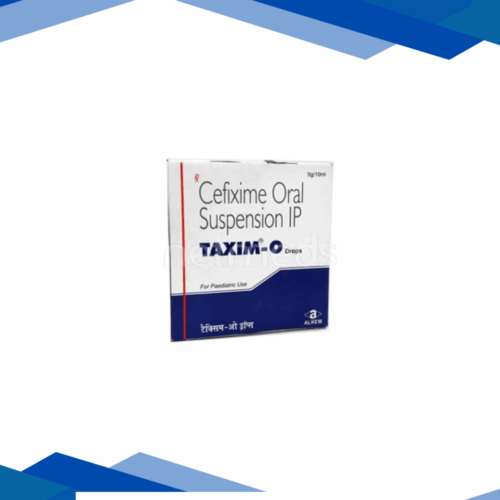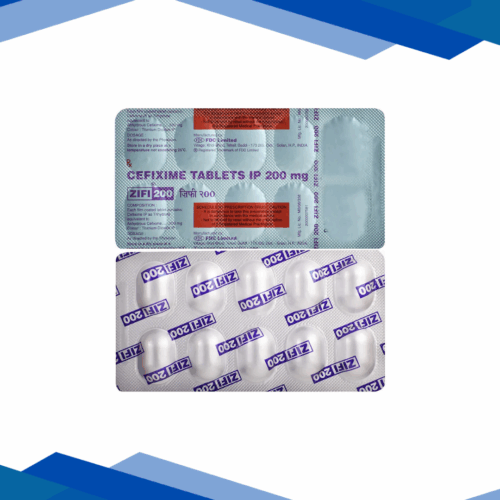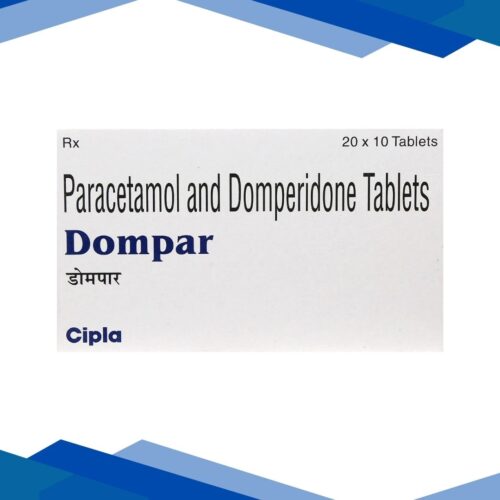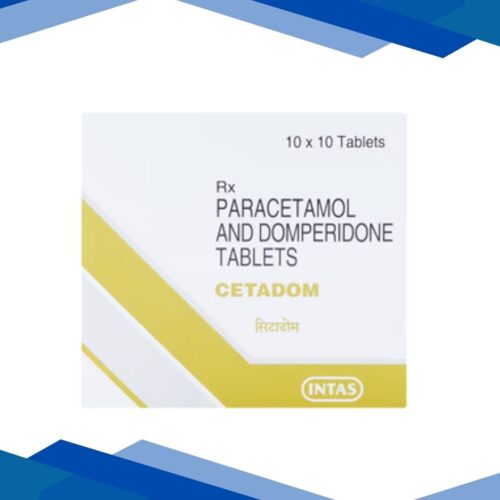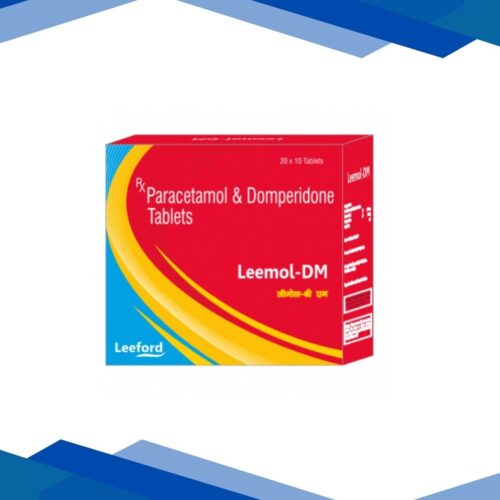Toyodom-Plus
No Prescription yet? Don’t worry! Click Here to Get Online Consultation
Why Prescription is Required?
✅ Providing Right Medicines
Prescriptions are complex documents. We proofread and recheck at various steps to provide you the right medication in the correct form and dose.
⚖️ Helps Comply with the Law
Most medicines cannot be sold without a valid prescription, as per the Drugs and Cosmetics Act, 1940 and Rules, 1945.
Book Appointment with Doctor
Paracetamol is used to relieve mild to moderate pain and reduce fever.
Domperidone is used to relieve nausea, vomiting, bloating, and to enhance stomach emptying in conditions like gastroparesis.
Domperidone
DOMPERIDONE
Overview:
Domperidone is a drug used to ease symptoms including nausea, vomiting, bloating and pain that occur due to slow movement of the stomach. It assists in the reduction of the feeling of sickness by increasing the speed at which food is passed through the stomach and the intestines. The drug is commonly used in cases where persons have issues of gastric disorders, acidity reflux and or rapidity of feeling full after eating.
Classification: Dopamine (D₂) receptor antagonist
Uses:
Domperidone is commonly being used in relieving such symptoms as nausea, vomiting, bloated stomach, or abdominal discomfort as a result of slow-digesting or acidic stomach. It assists ease of the food passage in the stomach and the intestinal system to promote a relief of the sensation of fullness, gases, and indigestion. In addition, it may be applied in the treatment of gastroparesis, which is a disorder in which the stomach does not empty as fast as it normally does and there are instances when it is taken to enhance breast breast milk production and under medical guidance.
How it works:
Domperidone works by blocking dopamine D₂ receptors, mainly in the part of the brain that controls nausea and in the gut. Dopamine can slow down the movement of the stomach and intestines and trigger vomiting. By blocking dopamine’s action, domperidone stimulates the muscles of the stomach and intestines, helping food move more quickly through the digestive tract. This action helps reduce nausea, vomiting, bloating, and discomfort after eating.
Dosage:As prescribed by your doctor.
Side effects:
Headache
Dry mouth
Drowsiness or fatigue
Irregular periods (in females)
Diarrhea
Precautions:
Before using domperidone, it is important to tell your doctor whether you have any heart problems, specifically whether you had experienced a skipped heartbeat, or whether you take any drug that is likely to impact the heart functionality. Be aware of doing it in case you have liver or kidney problems. Domperidone is not commonly applicable in long-time usage and higher dose, as it can increase the chance of cardiovascular side effects. Only pregnant or breastfeeding women are not allowed to use it without doctor recommendation. Never take more than the recommended dose and do not use it concomitantly with other cardiotropic medication unless advised by a health expert.
Disclaimer:This content is for informational purposes only. Always consult a healthcare provider for medical advice and proper dosage.
Paracetamol
PARACETAMOL
Overview
Paracetamol is a commonly used medication that helps relieve mild to moderate pain and reduce fever. It’s often used for:
Headaches
Toothaches
Muscle and back pain
Menstrual cramps
Cold and flu symptoms
It’s available over-the-counter and is considered safe when used as directed.
Classification
Analgesic and antipyretic agent
Uses
Paracetamol is used for pain relief and fever. It is used to relieve pain in conditions like headache, muscle pain, or dental pain.
How it works
When you produce a fever, your body’s internal thermostat — found in the hypothalamus portion of the brain — is raised to a higher temperature. This new set point is usually induced by pyrogens (substances made during infections) that tell the body to produce more heat as a form of immune defense.
Due to its effects in the brain, paracetamol reduces the production of reactive prostaglandins. Prostaglandins are disease-fighting chemicals released during infection that in turn, raise the body’s temperature set point. By decreasing prostaglandin levels, paracetamol enables the hypothalamus’ temperature control centre to bring the body’s temperature back down to normal, allowing the body to cool down and the fever to subside
Dosage
As directed by the physician
Precautions
Most people can take paracetamol safely, including:
pregnant women
breastfeeding women
children over 2 months of age – lower doses are recommended for young children
always get advice before taking paracetamol if you:
have liver or kidney problems
have problems with alcohol, like long-term alcohol misuse
are very underweight
are taking other medications
Don’t take paracetamol if you’ve had an allergic reaction to it in the past
Side effects
common side effects of paracetamol.
Nausea
Swelling
Vomiting
Pain
Tenderness in the upper abdomen
Sweating
Loss of appetite
Stomach cramps
Diarrhea
Major side effects are as follows:
Dark-colored urine
High fever
Lower backache
Skin having red spots
Rashes
Inflammation
Itching
Sore throat
Ulcers
Breathlessness
Yellowish eyes
Disclaimer
This content is for informational purposes only. Always consult a healthcare provider for medical advice and proper dosage.


